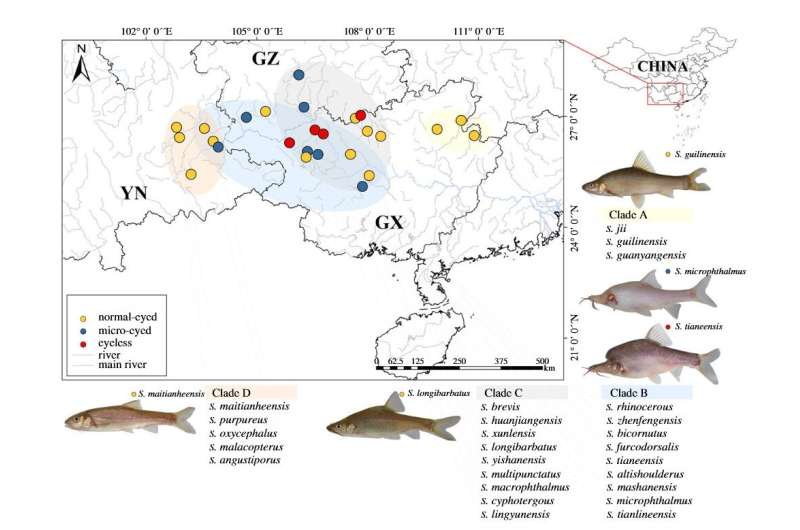October 14, 2022 report
How blind cavefish make their way in the dark

A team of researchers affiliated with several institutions in China, working with one colleague from the U.K and one from the U.S., has uncovered the means by which blind cavefish are able to find their way around in the dark. In their paper published in Proceedings of the Royal Society B, the group describes their anatomical study of multiple blind cavefish species and what they learned.
Prior research has shown that there are large numbers of fish living in ponds or streams in freshwater caves around the globe and that most of them have partially or completely lost their ability to see. In such fish, loss of eyes is common as well. In this new effort, the researchers wondered how it is that the fish are able to make their way around in their environment in a directed fashion inside of caves where oftentimes it is pitch black.
To find out, the researchers collected samples of 26 species of blind cavefish and studied their anatomy. Their main goal was to ascertain if they all had organs called neuromasts which are typically found under the skin along the sides of the body or head of a fish. Prior research has shown that their purpose is to detect changes in water pressure or movement.
In their work, the researchers found that all of the fish had more advanced neuromasts on just one side of their head, either the left or the right. They also found that the difference was more noticeable in fish who had lost their eyes altogether than in fish that still had partial vision.
The researchers then tested the fish in tanks that were well lit allowing for easy observation. They found that the fish made their way around by following the walls of the tank, lightly brushing them with the sides of their heads to maintain a close distance. They also found that the fish strongly favored the side of their body that had the more advance neuromast. Thus, the researchers deduced, the fish were using the organs the way humans use their hands, to feel their way along the walls of their surroundings.
More information: Bing Chen et al, Sensory evolution in a cavefish radiation: patterns of neuromast distribution and associated behaviour in Sinocyclocheilus (Cypriniformes: Cyprinidae), Proceedings of the Royal Society B: Biological Sciences (2022). DOI: 10.1098/rspb.2022.1641
Journal information: Proceedings of the Royal Society B
© 2022 Science X Network





















